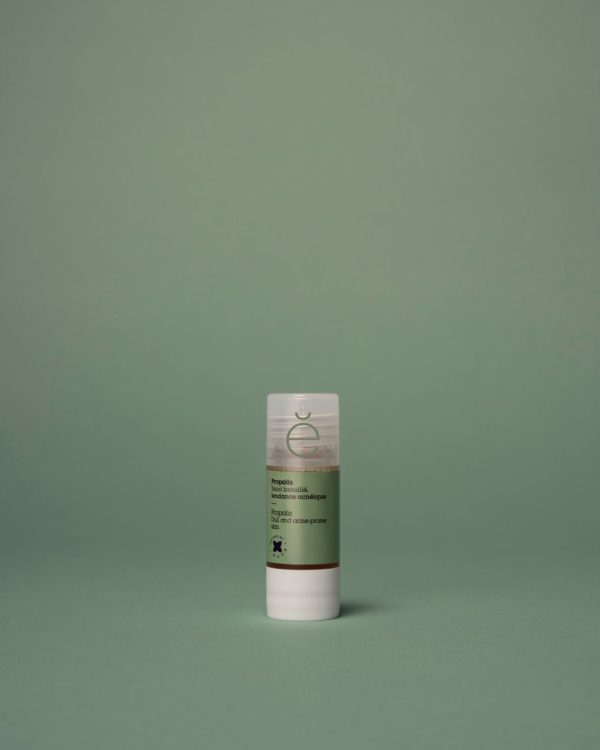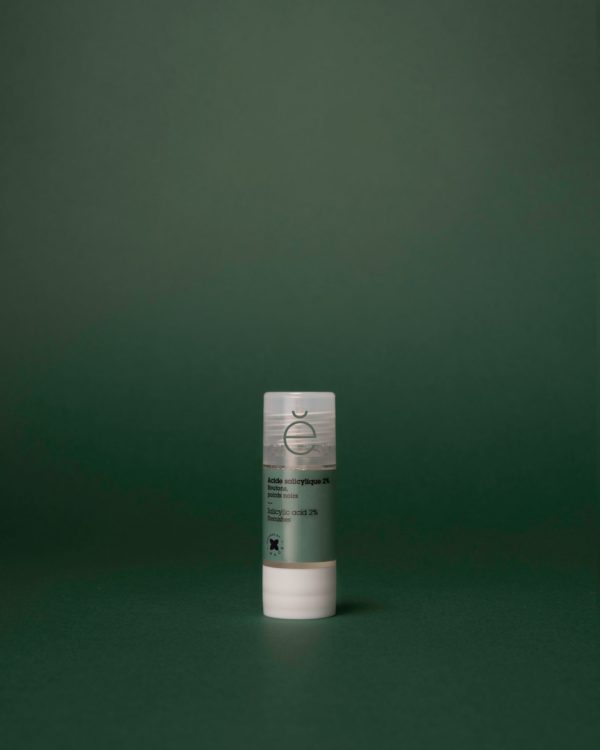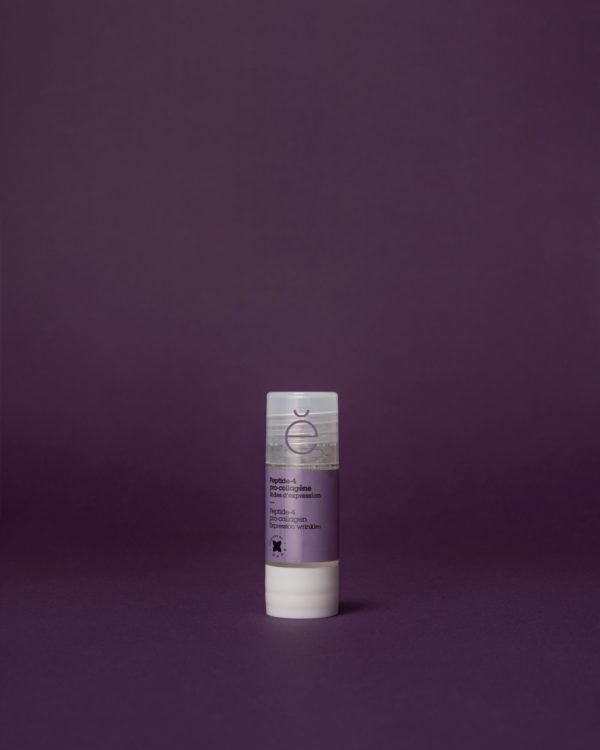

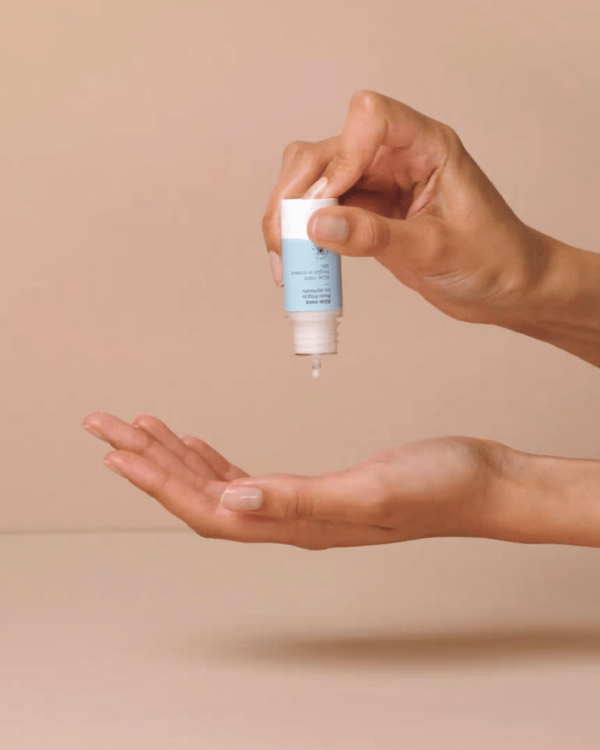
Aloe Vera
Stressed skin, Adults and teenagers
Order online
An extract of aloe vera leaf gel concentrated 200 times (an unrivalled concentration in cosmetics!) to moisturise and comfort facial skin. Ideal for fragile, dehydrated skin (cold, wind, excessive heat, external aggressions, etc.).
- Fragrance-free
- Made in France
- No artificial colouring agents
- Silicone-free
- Tested under dermatological control
- Vegan
-
Intensely hydrates
Rehydrates skin and helps maintain optimal moisture content, offering protection against dehydration.
-
Soothes
Also known for its soothing properties, aloe vera is the ideal ingredient to comfort and strengthen fragile skin.
-
Regenerates
Boosts the synthesis of fundamental components of the dermal matrix for regenerated, less damaged facial skin.
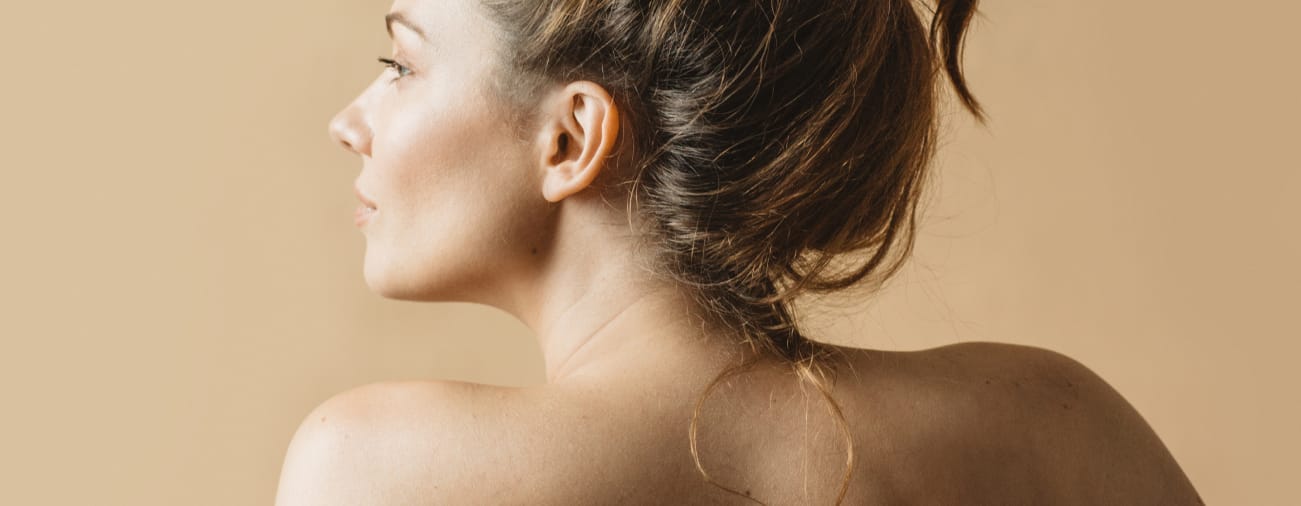
Is this care suitable
for your skin?
-
When
Our recommendation: may be used as a 3-week treatment or whenever your skin is dehydrated (frequent air travel, cold weather, acne treatment, sun-induced burning sensations, excessive heat).
-
Where
Apply to the entire face. Apply to dry, thoroughly cleansed skin.
-
How
Squeeze the base of the bottle and apply 4 drops to the tips of the fingers. Gently smooth and press into the skin.
Do not use more than 2 pure active ingredients at a time. If you are using 2 active ingredients, you may apply one after the other.
The efficacy of this highly purified and perfectly dosed active ingredient is scientifically proven to help soothe and strengthen fragile or overstripped skin.
We have added additional ingredients to this active: their exclusive role is to ensure the product’s stability and ability to penetrate the skin (In-Skin patent). Nothing more, nothing less.
Our aloe vera comes from the department of El Progresso in Guatemala. The producer is committed to sustainable development and fair trade. This region’s volcanic soil and subtropical climate make it possible to grow aloe vera without the use of chemical fertilisers.
For more information on the composition of this product, click:
AQUA/WATER/EAU
What it is?
Water contained in Isodermic Water.
What’s the point?
Contributes to the Isodermic Water patent.
NAOS has designed a perfectly defined water, meeting the three fundamental criteria for physiological fluids: pH, oxidation resistance, and concentration of mineral salts.
It optimises cellular functioning and preserves the balance of healthy skin.
Components contributing to this patent: aqua/water/eau, disodium adenosine triphosphate, carnosine, laminaria digitata extract.
How do you get it?
Mineral origin.
DICAPRYLYL CARBONATE
What it is?
Fatty alcohol derivative.
What’s the point?
Emollient: soothes and softens the skin.
How do you get it?
Combination of fatty alcohol of plant origin, and a synthesised carbonate derivative.
PROPANEDIOL
What it is?
Polyol.
What’s the point?
Contributes to the In-Skin patent.
This patented complex optimises the diffusion of the active ingredient in the skin for targeted action.
How do you get it?
Biotechnology.
Biotechnology uses biological processes, including natural fermentation, to obtain ingredients.
DISODIUM PHOSPHATE
What it is?
Sodium derivative.
What’s the point?
Stabilising: helps adjust the product’s pH.
How do you get it?
Component naturally found in the skin, of mineral origin.
UREA
What it is?
Urea.
What’s the point?
Contributes to the In-Skin patent.
This patented complex optimises the diffusion of the active ingredient in the skin for targeted action.
How do you get it?
Synthesis
To select an ingredient, NAOS can call on synthesis in order to:
– reconstitute a natural molecule without having to extract it from a plant and thus better respect biodiversity,
– obtain a pure, perfectly defined ingredient.
ALCOHOL
What it is?
Wheat alcohol.
What’s the point?
Contributes to the In-Skin patent.
This patented complex optimises the diffusion of the active ingredient in the skin for targeted action.
How do you get it?
Biotechnology.
Biotechnology uses biological processes, including natural fermentation, to obtain ingredients.
C14-22 ALCOHOLS
What it is?
Fatty alcohol.
What’s the point?
Thickening: provides the texture with consistency.
How do you get it?
Obtained from fatty acids extracted from vegetable oil.
CAPRYLOYL GLYCINE
What it is?
Lipoamino acid.
What’s the point?
Stabilising: contributes to the product’s homogeneity or stability.
How do you get it?
Obtained by synthesis from fatty acid extracted from vegetable oil, and synthesised glycine.
POTASSIUM PHOSPHATE
What it is?
Potassium derivative.
What’s the point?
Stabilising: helps adjust the product’s pH.
How do you get it?
Component naturally found in the skin, of mineral origin.
SODIUM LACTATE
What it is?
Lactic acid derivative.
What’s the point?
Contributes to the In-Skin patent.
This patented complex optimises the diffusion of the active ingredient in the skin for targeted action.
How do you get it?
Component naturally found in the skin, obtained by biotechnology.
Biotechnology uses biological processes, including natural fermentation, to obtain ingredients.
ALOE BARBADENSIS LEAF JUICE POWDER
What it is?
Aloe vera extract.
What’s the point?
Moisturising: increases the water content of the skin’s outermost layers.
How do you get it?
Aloe vera leaf extraction.
LEUCONOSTOC/RADISH ROOT FERMENT FILTRATE
What it is?
Black radish extract.
What’s the point?
Stabilising: contributes to the product’s homogeneity or stability.
How do you get it?
Biotechnology.
Biotechnology uses biological processes, including natural fermentation, to obtain ingredients.
C12-20 ALKYL GLUCOSIDE
What it is?
Fatty alcohol and sugar derivative.
What’s the point?
Emulsifying: enables the formation and stabilisation of an emulsion.
How do you get it?
Obtained by synthesis from fatty alcohols and glucose of plant origin.
CETEARYL ALCOHOL
What it is?
Fatty alcohol.
What’s the point?
Stabilising: contributes to the product’s homogeneity or stability.
How do you get it?
Obtained from fatty acid extracted from vegetable oil.
XANTHAN GUM
What it is?
Xanthan gum.
What’s the point?
Gelling: provides the texture with consistency.
How do you get it?
Biotechnology.
Biotechnology uses biological processes, including natural fermentation, to obtain ingredients.
SODIUM HYDROXIDE
What it is?
Sodium derivative.
What’s the point?
Stabilising: helps adjust the product’s pH.
How do you get it?
Component naturally found in the skin, obtained by synthesis.
To select an ingredient, NAOS can call on synthesis in order to:
– reconstitute a natural molecule without having to extract it from a plant and thus better respect biodiversity,
– obtain a pure, perfectly defined ingredient.
SODIUM STEAROYL GLUTAMATE
What it is?
Fatty acid and amino acid derivative.
What’s the point?
Emulsifying: enables the formation and stabilisation of an emulsion.
How do you get it?
Combination of fatty acid extracted from vegetable oil, and glutamic acid (biotechnology).
SALIX NIGRA (WILLOW) BARK EXTRACT
What it is?
Black willow extract.
What’s the point?
Stabilising: contributes to the product’s homogeneity or stability.
How do you get it?
Black willow bark extraction.
COCO-GLUCOSIDE
What it is?
Fatty alcohol and sugar derivative.
What’s the point?
Emulsifying: enables the formation and stabilisation of an emulsion.
How do you get it?
Obtained by synthesis from fatty alcohol and glucose of plant origin.
CARRAGEENAN
What it is?
Carrageenan gum.
What’s the point?
Gelling: provides the texture with consistency.
How do you get it?
Red algae extraction.
POTASSIUM SORBATE
What it is?
Sorbic acid derivative.
What’s the point?
Preservative: protects the product from microbial contamination throughout its use.
How do you get it?
Synthesis
To select an ingredient, NAOS can call on synthesis in order to:
– reconstitute a natural molecule without having to extract it from a plant and thus better respect biodiversity,
– obtain a pure, perfectly defined ingredient.
LAMINARIA DIGITATA EXTRACT
What it is?
Brown algae extract.
What’s the point?
Contributes to the Isodermic Water patent.
NAOS has designed a perfectly defined water, meeting the three fundamental criteria for physiological fluids: pH, oxidation resistance, and concentration of mineral salts.
It optimises cellular functioning and preserves the balance of healthy skin.
Components contributing to this patent: aqua/water/eau, disodium adenosine triphosphate, carnosine, laminaria digitata extract.
How do you get it?
Laminaria algae extraction.
CARNOSINE
What it is?
Peptide.
What’s the point?
Contributes to the Isodermic Water patent.
NAOS has designed a perfectly defined water, meeting the three fundamental criteria for physiological fluids: pH, oxidation resistance, and concentration of mineral salts.
It optimises cellular functioning and preserves the balance of healthy skin.
Components contributing to this patent: aqua/water/eau, disodium adenosine triphosphate, carnosine, laminaria digitata extract.
How do you get it?
Component naturally found in the skin, obtained by synthesis.
To select an ingredient, NAOS can call on synthesis in order to:
– reconstitute a natural molecule without having to extract it from a plant and thus better respect biodiversity,
– obtain a pure, perfectly defined ingredient.
DISODIUM ADENOSINE TRIPHOSPHATE
What it is?
Nucleotide (ATP).
What’s the point?
Contributes to the Isodermic Water patent.
NAOS has designed a perfectly defined water, meeting the three fundamental criteria for physiological fluids: pH, oxidation resistance, and concentration of mineral salts.
It optimises cellular functioning and preserves the balance of healthy skin.
Components contributing to this patent: aqua/water/eau, disodium adenosine triphosphate, carnosine, laminaria digitata extract.
How do you get it?
Component naturally found in the skin, obtained by biotechnology.
Biotechnology uses biological processes, including natural fermentation, to obtain ingredients.
TOCOPHEROL
What it is?
Vitamin E or tocopherol.
What’s the point?
Antioxidant: prevents the oxidation of the ingredients contained in the product.
How do you get it?
Component naturally found in the skin, extracted from vegetable oil.
Of the 30,000 ingredients approved for use in cosmetics, our formulation charter only includes 150 to keep only those that respect your skin.
Find out more-
Where does your aloe vera come from?
Aloe vera is a plant that grows in dry environments and that stores water in its leaves. Water is the main component in its leaves and makes up 98 to 99% of its weight. Used since ancient times, aloe vera has a number of active properties and easily penetrates the skin.
-
How do I know if I have very dry or dehydrated skin?
Make sure you accurately diagnose your skin: dry or very dry skin is a skin type that is lacking in natural oil production. It presents as tight and uncomfortable year-round, minimal visible oil flow and needs to be nourished with lipids. Conversely, dehydrated skin is typically a temporary skin condition (even if it is combination or oily) – it lacks water at a given time and needs to be hydrated with water. The symptoms are almost identical, but the solutions aren’t! A common symptom of dehydrated skin is the appearance of very fine lines.
-
How do I know if I have fragile or damaged skin?
The skin can become fragile due to a number of factors: exposure to harsh products, medicated treatments, environmental conditions (cold, wind, heating, air-conditioning, etc.), skin weakening with age... It can also be damaged by skin rashes, sunburn, cosmetic procedures or even shaving for men... In both cases, it is important to regenerate and soothe the skin to restore its natural barriers and prevent marks from being left. Aloe vera is excellent at stimulating skin regeneration. An easy way to diagonse fragile or damaged skin is frequent irritation, sensitivity and an uneven skin tone, redness, blotchy, etc.
-
What is the link between soft skin and hydration?
Hydration is the secret to soft and radiant skin. When the skin is hydrated, its elasticity will be improved and the skin barrier works more effectively to retain and circulate water. Water makes up 60% of body weight in humans. For silky skin, opt for ultra-hydrating ingredients, regularly exfoliate with a gentle scrub and, of course, drink lots of water! And don’t forget to moisturise your body and hands too.
-
What is the difference between Pure Skincare and Pure Actives?
Pure Skincare products do not contain any active ingredients, to take care of skin every day, without needlessly irritating it. Pure Actives offer a targeted action to treat skin problems when necessary (1 Pure Active = 1 skin issue). Healthy skin with no particular issues does not need Pure Actives.
-
Pure Active: how is this different from a serum?
In terms of the way it is used, Pure Actives are applied like a serum: to clean skin before your face cream, to provide a specific action.
But, unlike a serum, our Pure Actives only contain a single, perfectly dosed, active molecule, which precisely targets a skin issue. This means that they are ultra-safe, since there’s no risk of a cocktail effect (piling up different active ingredients). And our INSkin™ patent helps it to penetrate down to where it needs to be in the skin. -
Pure Active: should I apply it before or after my face cream?
Always before your moisturising cream, but most importantly, always on clean skin. Thanks to their drop-by-drop bottles, Pure Actives are applied in small quantities, where they are needed (see the detailed instructions for each product).
-
What is the maximum number of Pure Actives that I can apply to my skin?
We recommend applying no more than 2 Pure Actives at once to your face (1 Pure Active after the other, to clean skin before applying your face cream). In most cases, the best solution is to treat one problem at a time with a Pure Active. If you apply multiple active substances on your skin there is a risk of over-treating it.
-
How long should a Pure Active be used for?
Pure Actives should be used like a “course of treatment”, for between 3 and 8 weeks depending on the active ingredient and the benefit in question. That’s why we package them in small anti-UV containers suited to short-term use. To ensure they stay effective, you should store them away from heat and light, and for no more than 6 months. You’ll find usage instructions for each Pure Active on the product pages on the site.
-
Do your products contain fragrances?
Our Pure Actives do not contain fragrances, nor do some of the other care products such as the Moisturising Eye Contour Fluid, the Melting Exfoliating Gel and the Express Purifying Mask. The majority of our Pure Skincare products are very lightly scented to make them pleasant to use while being kind to skin. We carefully select our fragrances, which we create ourselves, and make sure they are free from allergens and sensitising substances.
-
Are your products tested on animals?
No, in accordance with the applicable European cosmetics regulations, our products and the ingredients they contain are not tested on animals. Toxicology experts have evaluated our formulas’ perfect tolerance. And, of course, our products are tested under dermatological and ophthalmological supervision if necessary.
-
Do your products contain preservatives?
In order to protect our formulas from contamination, we use the necessary amount of natural preservatives (black radish extract, potassium sorbate or capryloyl glycine). We also use airless bottles, pumps and tubes to limit the risk of contamination, and therefore the quantity of preservatives.
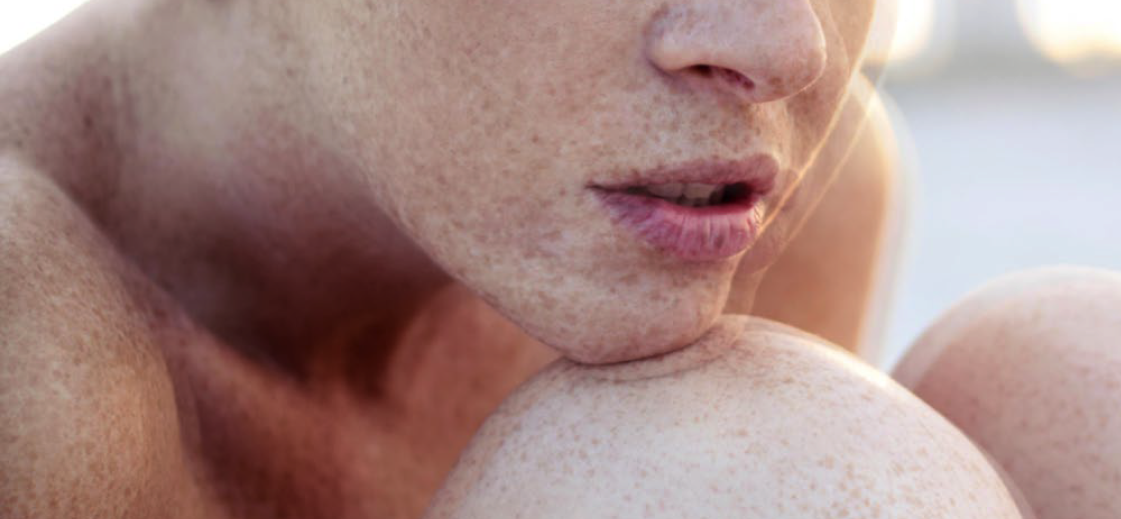
SKIN COACH
Caring for your skin, our skin coaches can guide you.
